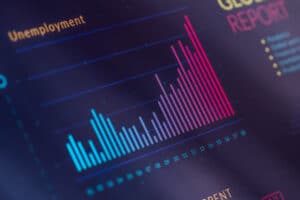The impacts of the 2019 coronavirus pandemic have been far-reaching with political and economic effects felt through trade and industry. The societal impact of this pandemic has also been felt, especially by those in Asian communities across Britain who have been associated with the spread of the virus due to it having originated in Wuhan, China. This has been shown in the sharp increase in racially motivated abuse and attacks targeting Asian communities with anti-Chinese sentiment; known as Sinophobia.
According to the last official census, conducted in 2011, the Chinese population in the UK numbers 393,141, or 0.7% of the total population.1 As the census is only conducted every 10 years it is difficult to obtain accurate, up-to-date information, but it is likely that the number of people identifying as ethnically Chinese and living in the UK will have increased beyond this in the past nine years.
As the new coronavirus epidemic received greater media coverage, hate crimes rose drastically in the first three months of 2020 with 267 offences recorded – a figure three times higher than the previous two years.2 Cases have also increased outside of the large UK conurbations. In Exeter, as of 6th March 2020, there had been six separate racially-motivated physical assaults against Asian people, including three assaults against Chinese teenagers reported in a 24-hour period.3 The Metropolitan Police have had to create an online community reference group to empower people to report hate crimes and to try and diminish concerns on the issue.4 Chinese communities have also formed their own virtual and physical support groups, especially around the universities, where Chinese students are prevalent in the UK.
Whilst social contact has been somewhat lessened through the imposition of lockdown measures aimed at reducing the spread of this virus, a large portion of those listed as key workers are of Asian ethnicity and so have more frequent contact with the public. According to the 2018 population survey published by the government, 8% of those in the construction industry identify as ethnically Asian and 27.5% in public admin, education and health sectors.5 Furthermore, whilst any form of discrimination is deplorable, contributing factors to the rise in Sinophobia and Asian targeted discrimination could be attributed to the heightened level of stress and anxiety felt by the nation as a result of increased isolation and fear of this virus.6 Restricted freedom of movement for many has increased irritation levels as has been shown through the increase in noise complaints reported by councils across the UK.7 Regrettably, this has also led to an increase in reported neighbour-related racial disputes.8
It is not just Chinese people that are receiving abuse, other Asian people have also been targeted. Possibly the most publicised racial attack was in Oxford Street in February of this year. A Singapore man, Jonathan Mok, was left with facial fractures after being repeatedly punched by youths accusing him of bringing the coronavirus to the UK.9 Some people have been caught and punished for these sort of acts. A Bristol man received eight weeks in jail for accusing a city council worker of bringing the coronavirus into the UK, he also got a further 21 weeks for assault on the Police Officer who tried to arrest him.10 However, Asian discrimination is vastly under-reported, partly due to many prejudicial acts being subtle such as passing comments or actions such as moving away from those of Asian descent in public or on public transport.11 12
It is not just the fact of where this virus originated that causes these issues. The way the media report the pandemic also fuels mistrust in the Asian community. A copy of the publication, The Epoch Times, has been distributed through doors in the UK, as well as around the world, with hard-hitting anti-Chinese propaganda.13 Politicians have also seemed to fuel dissent with Michael Gove appearing to blame China for the lack of information received, and Dominic Raab stating that China faced some “hard questions” about this crisis.14 It is no wonder then, that a Daily Mail online poll showed 56% hold Beijing responsible for the spread of the infection around the world.15
In 2015, the World Health Organisation introduced recommendations to avoid naming diseases after geographical locations to counteract the problem of racially associating disease with a place.16 COVID-19 has quickly replaced the Wuhan virus or Chinese Flu. This was something US President, Donald Trump, had to be reminded of back in March when he referred to it as “the Chinese virus”, which he then had to defend when accused of being racist.17 This caused more tensions between the US and China, already suffering from trade issues. This xenophobia trickles down from the people in charge to the person on the street. As shown through the few thousand incidences of xenophobia and racism against Asian-Americans between 28th January and 24th February 2020, according to a tally compiled by Russell Jeung, Professor of Asian American Studies at San Francisco State University.18
It should be noted that it is not just Western countries that have seen increases in racial tensions since this pandemic started. In Ethiopia, foreigners’ photos have been posted online linking them to carrying the virus.19 In Indonesia, major media outlets have been complicit in spreading anti-Chinese conspiracies.20 Most surprising of all, in Japan, the hashtag #ChineseDontComeToJapan has been trending on Twitter.21 Even China itself has not been exempt, with natives of Wuhan being harassed and not being allowed into other regions.22 Some countries, such as Bangladesh and Malaysia, have been utilising the fear of the virus and its carriers for political means, turning away Rohingya refugees, for fear of them carrying the virus.23
Around the world, basic prejudices have surfaced, with many shops and restaurants putting up notices forbidding entrance to Chinese. Although some authorities have admonished such practices, others are turning a blind eye.24 Many people have also boycotted Asian shops and take-aways with a 50% drop in trade and a huge slump in footfall in London’s Chinese restaurants during March. Although how much of this may not be solely due to prejudice but the result of imposed lockdown closures. It is not just retail businesses that are suffering, with suppliers and producers feeling the knock-on effects.25 With Chinatown in London having such high rental and business costs, many companies there already have tight margins and will struggle to stay afloat with a significant drop in trade. In London, one-third of the restaurants in Chinatown had to close even before the lockdown.26
The US-China trade war has the possibility to escalate and people may decide they do not want to buy Chinese made products either due to beliefs of possible contamination of this virus or as a direct xenophobic influence. China has been the world’s largest exporter of goods since 2009, and the largest trading nation since 2013. Official estimates suggest Chinese exports amounted to $2,097 trillion in 2017.27 If the rise in Sinophobia continues, then it will not just be the individual people that could suffer, the possible collateral damage to trade could be ongoing for much longer than this pandemic.
The COVID-19 pandemic has brought out the best and the worst in the world’s population. While standing strong and helping out those in need, the basic prejudices that most people keep hidden have also been seen more frequently. Outbreaks create fear, a basic ingredient on which racism and xenophobia can thrive. Language can become more violent and personal relationships can be strained in communities already suffering from economic hardship and loss due to this virus. In this case, the country of origin for COVID-19, China and its residents living elsewhere seem to have become a target.


